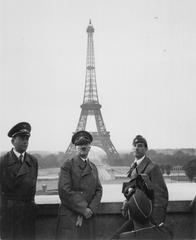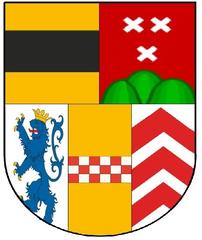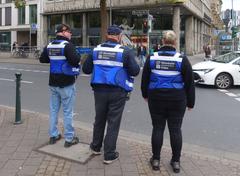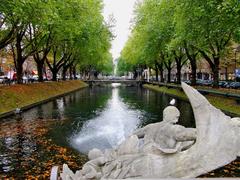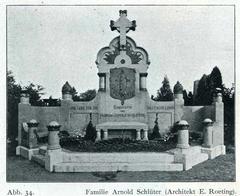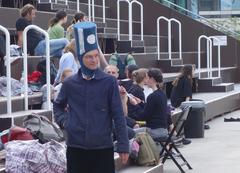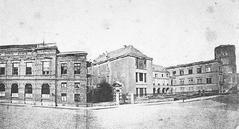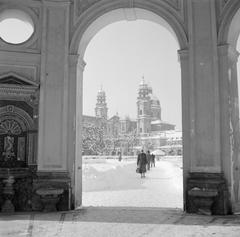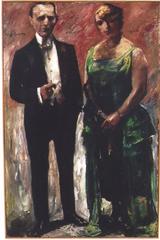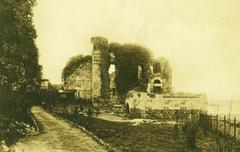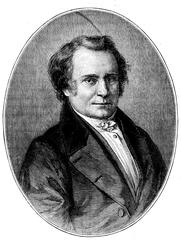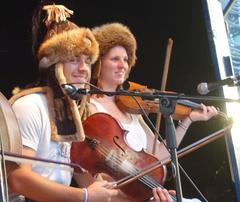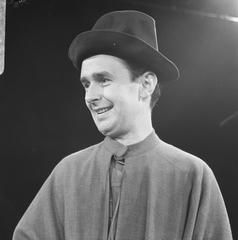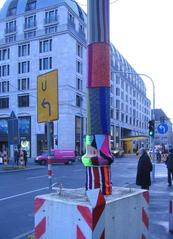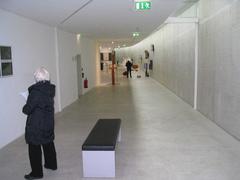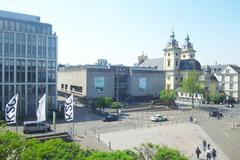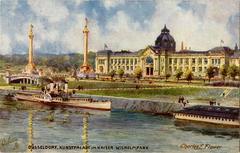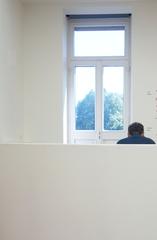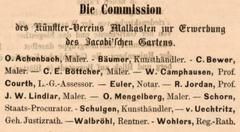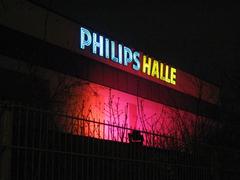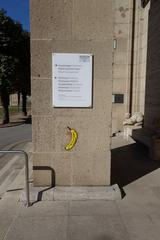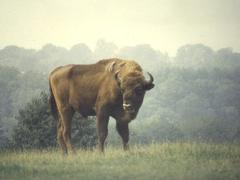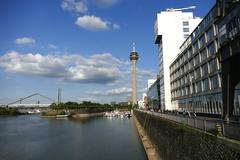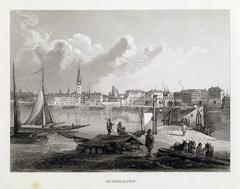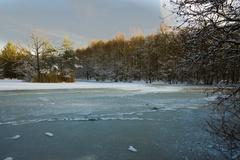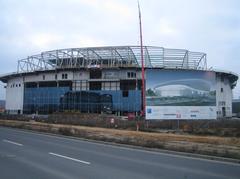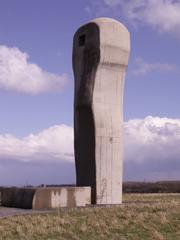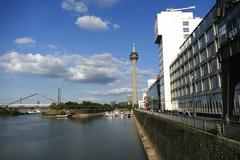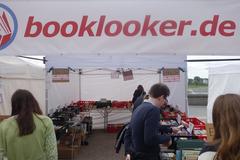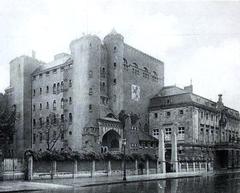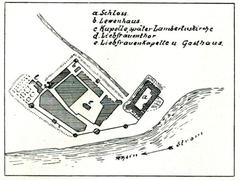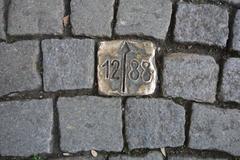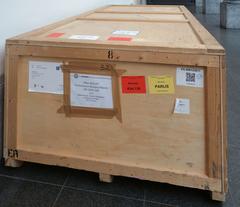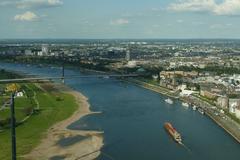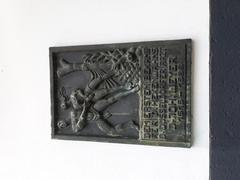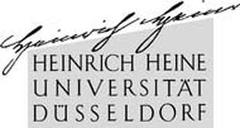
Theodor Heuss Bridge Düsseldorf: Visiting Hours, Tickets, History, and Tourist Guide
Date: 04/07/2025
Introduction
The Theodor Heuss Bridge in Düsseldorf is a striking symbol of the city’s resilience, architectural prowess, and forward-thinking approach to urban development. Opened in 1957 as Germany’s first major cable-stayed bridge, it spans the Rhine River and connects the districts of Golzheim and Niederkassel. Today, the bridge plays a key role as a transportation artery for vehicles, pedestrians, and cyclists, while also serving as a beloved cultural landmark that offers panoramic views of Düsseldorf’s ever-evolving skyline.
Looking ahead, the bridge is at the center of the ambitious “Green Bridge Düsseldorf” redevelopment initiative, which aims to transform it into a multifunctional urban space integrating green parks, residential and commercial facilities, and clean energy systems. This guide provides a comprehensive overview of the Theodor Heuss Bridge’s history, architectural significance, visitor information, accessibility, nearby attractions, and the exciting prospects for its future.
For a deeper dive into its history and redevelopment proposals, see Wikipedia and Architekturblatt.
Table of Contents
- Introduction
- Historical Background and Architectural Significance
- Visitor Information: Hours, Tickets, and Accessibility
- Current Status and Green Bridge Vision
- Nearby Attractions and Events
- Travel Tips and Visitor Experience
- Frequently Asked Questions (FAQ)
- Conclusion
- References and Official Links
Historical Background and Architectural Significance
Origins and Urban Planning
Conceived in the early 1950s to address Düsseldorf’s growing post-war transport demands, the bridge—originally named Nordbrücke (North Bridge)—was part of a larger infrastructure initiative to improve east-west connections across the Rhine. It provided a direct route for Bundesstraße 7 (B7) and helped close gaps in the A52 Autobahn, linking Düsseldorf to regions including Essen, the Ruhrgebiet, Kaarst, and Mönchengladbach (Wikipedia).
Planning and Construction
Led by architect Friedrich Tamms and engineer Fritz Leonhardt, the design introduced pioneering cable-stayed technology based on Franz Dischinger’s engineering principles. Construction began in 1954, and despite setbacks like the collapse of a major segment during assembly, the bridge opened on December 19, 1957, marking a milestone in German civil engineering (Wikipedia).
Naming and Heritage Status
Renamed in 1964 to honor Theodor Heuss, Germany’s first Federal President, the bridge was granted heritage protection in 2016, in recognition of its engineering and cultural value (Wikipedia).
Architectural Significance
The bridge’s slender pylons and harp-shaped cable arrangement support a 260-meter main span and steel box girder deck. Its minimalist modernist design set a precedent for later projects such as the Fleher Brücke and Josef-Kardinal-Frings-Brücke (Wikipedia).
Legacy in Urban Context
As part of Düsseldorf’s “Brückenfamilie,” the Theodor Heuss Bridge is more than just infrastructure—it is a symbol of post-war renewal and a vital link connecting the city’s business districts, Messe Düsseldorf, the airport, and the Seestern area.
Visitor Information: Hours, Tickets, and Accessibility
- Visiting Hours: Open 24/7. The Theodor Heuss Bridge is a public structure with no restricted hours.
- Tickets: No entry fee or tickets are required; the bridge is free for all users.
- Accessibility: Smooth ramps and wide paths make the bridge wheelchair-friendly. Pedestrian and cycling lanes are clearly marked and separated from vehicular traffic.
- Public Transport: Easily accessible via tram and bus lines; the Kettwiger Straße U-Bahn stop is close to the eastern end (Komoot).
- Parking: Limited around the bridge; public transportation or cycling is recommended.
- Pets: Allowed, but must be leashed.
Current Status and Green Bridge Vision
Structural Status and Renewal Needs
With daily traffic exceeding 72,000 vehicles, the bridge faces significant structural strain. Patch repairs are no longer sufficient, prompting discussions about comprehensive renovation or full replacement (Architekturblatt).
The “Green Bridge Düsseldorf” Proposal
Developed by RKW Architektur+ and JLL Düsseldorf, the Green Bridge concept envisions a transformative urban space (rkw.plus). Key features include:
- Traffic Separation: A new four-lane tunnel beneath the bridge for vehicles, freeing the upper deck for pedestrians and cyclists.
- Urban Park: A 1.5-kilometer-long landscaped park with walking and cycling paths, panoramic viewpoints, and 200 trees.
- Mixed-Use Spaces: Residential units, a boutique hotel, offices, and retail spaces, fostering a vibrant urban environment.
- Renewable Energy: Integrated wind turbines and solar panels making the bridge nearly energy self-sufficient.
- Noise & Environmental Protection: Traffic below the park level reduces noise and pollution.
- Construction Timeline & Costs: Estimated at 3–4 years with costs around €700 million; a temporary auxiliary bridge is planned to maintain flow during construction.
Nearby Attractions and Events
Enhance your visit by exploring these nearby destinations:
- Museum Kunstpalast: Home to masterpieces from Rubens, Dürer, and contemporary German artists.
- NRW Forum: Cutting-edge exhibitions on photography, digital art, and pop culture.
- Tonhalle Düsseldorf: Renowned domed concert hall and home of the Düsseldorf Symphony Orchestra.
- Rheinpark Golzheim: Lush riverside park ideal for relaxation, jogging, and picnics.
- EKO House of Japanese Culture: Japanese garden and temple in Niederkassel (The World Was Here First).
- Cecilienallee & Rheinuferpromenade: Scenic riverside promenades for walking and dining.
- Rhine River Cruises: Board near the bridge for sightseeing and dining cruises on the Rhine.
- Altstadt (Old Town) & Königsallee: Explore Düsseldorf’s historic center and luxury shopping boulevard.
Throughout the year, the bridge area hosts city festivals, marathons, and cultural celebrations (see Ddorf Aktuell).
Travel Tips and Visitor Experience
- Best Time to Visit: Early mornings and late afternoons for tranquil views and optimal lighting, especially at sunset.
- Weather: Bring a windbreaker or umbrella in spring and autumn.
- Safety: Remain in marked lanes and be mindful of cyclists; the bridge is regularly maintained and patrolled.
- Photography: The eastern end near Museum Kunstpalast offers superb cityscape shots.
- Dining: Cafés, beer gardens, and bistros on both riverbanks serve local specialties and refreshments.
Frequently Asked Questions (FAQ)
Q: What are the Theodor Heuss Bridge visiting hours?
A: The bridge is accessible 24/7.
Q: Is there an entry fee or tickets required?
A: No, access is free.
Q: Is the bridge wheelchair accessible?
A: Yes, with ramps and smooth pathways.
Q: Are pets allowed?
A: Yes, but they must be leashed.
Q: Are guided tours available?
A: Some city tours include the bridge; check with local tourism offices.
Q: How do I get there?
A: By tram, bus, bicycle, or on foot from nearby districts.
Q: What is the Green Bridge project?
A: A visionary redevelopment plan to transform the bridge into a multifunctional urban park with integrated housing, offices, and renewable energy features.
Conclusion
The Theodor Heuss Bridge is a testament to Düsseldorf’s resilience, innovation, and commitment to sustainable urban living. As a historical landmark, architectural marvel, and evolving public space, it invites exploration, reflection, and appreciation. Whether you are crossing for your daily commute, taking a leisurely walk, or marveling at its design, the bridge offers a unique window into the city’s past, present, and ambitious future.
References and Official Links
- Theodor Heuss Bridge – Wikipedia DE
- Architekturblatt: Green Bridge Düsseldorf
- RKW Plus: Green Bridge Düsseldorf Vision
- Düsseldorf Tourism Official Site
- Düsseldorf City Infrastructure
- Komoot Highlight: Theodor Heuss Bridge
- The World Was Here First: Düsseldorf Itinerary
- Ddorf Aktuell: Bridge Renewal Discussions
- Trek Zone: Theodor Heuss Bridge

